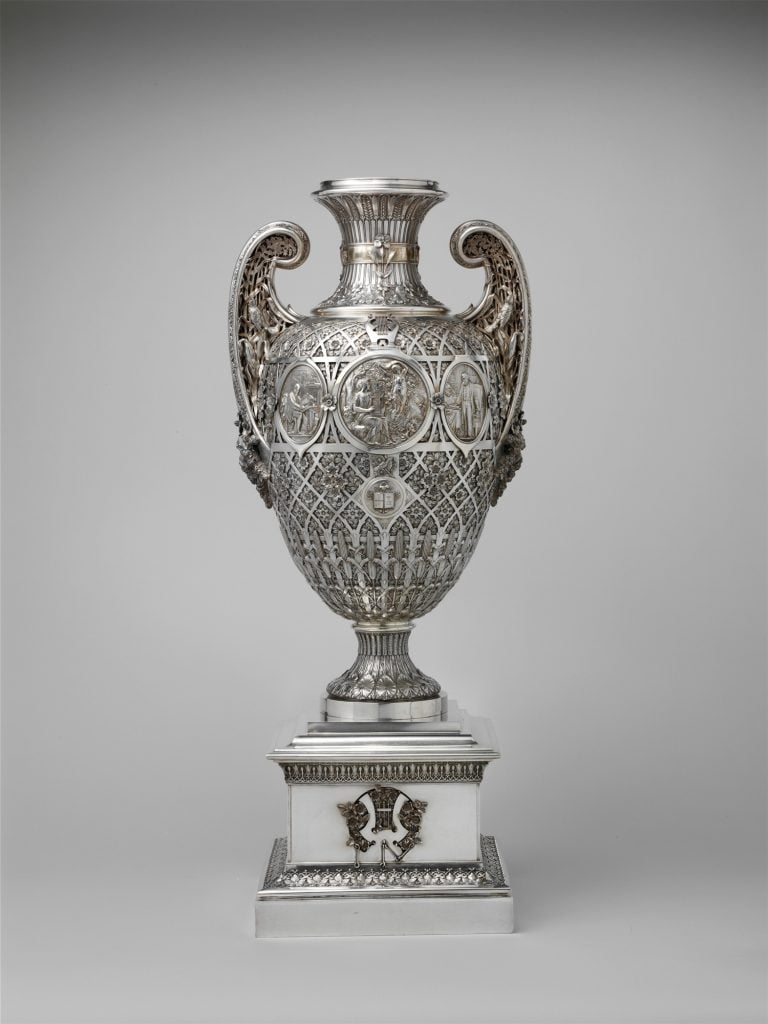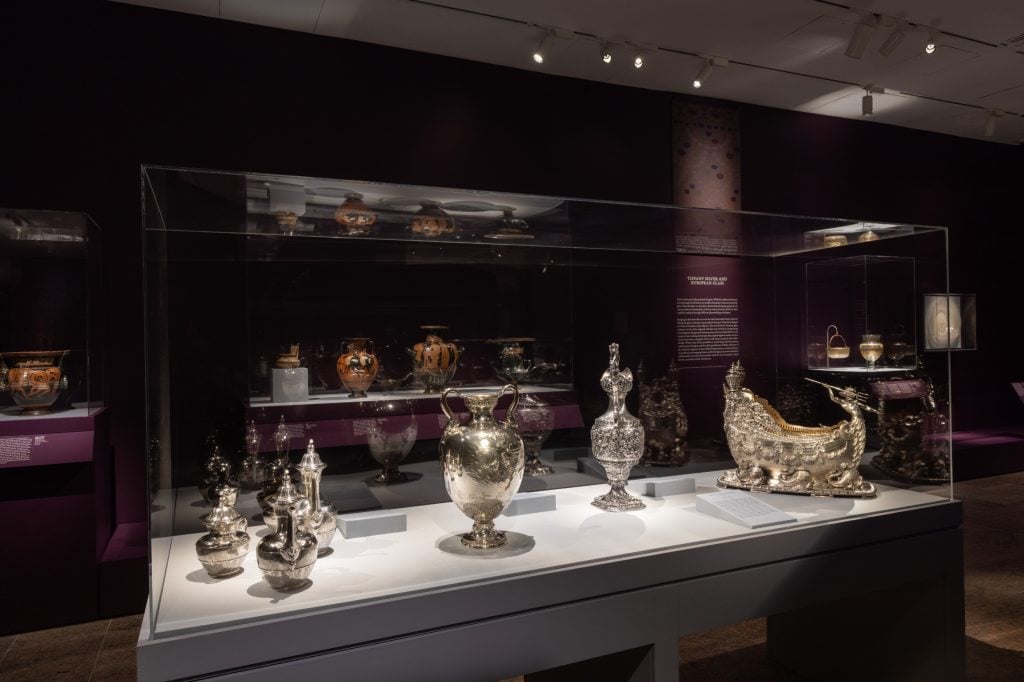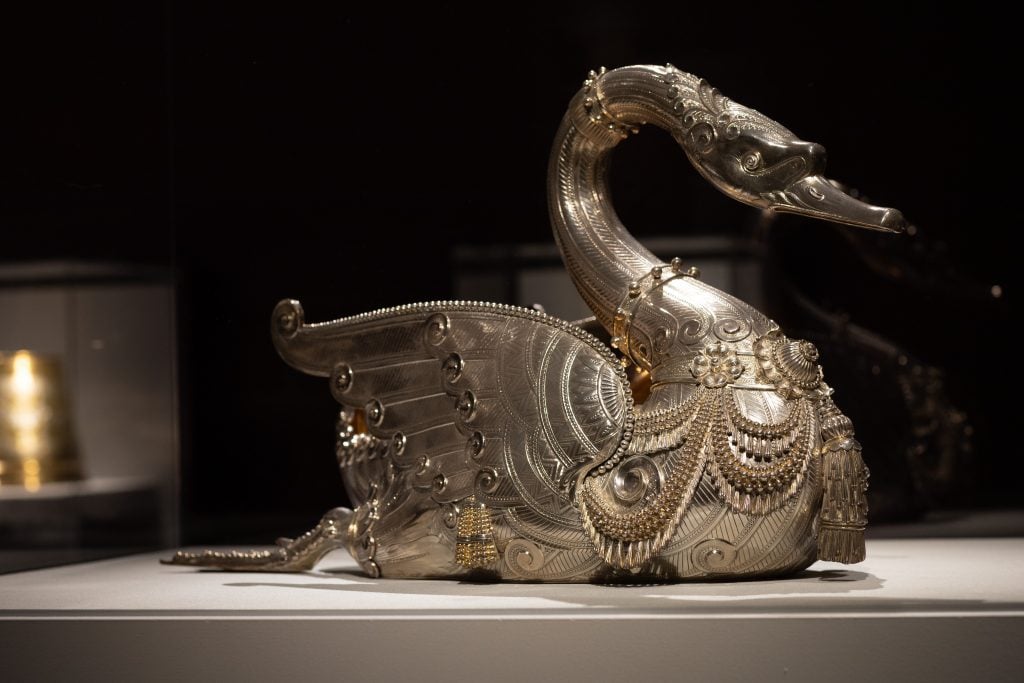On View
The Met Spotlights the Intricate Work of a Celebrated Silversmith
The 19th-century silversmith and collector Edward C. Moore amassed a trove of decorative treasures. They're paired with his exquisite work for Tiffany & Co. at The Met.

The 19th-century silversmith and collector Edward C. Moore amassed a trove of decorative treasures. They're paired with his exquisite work for Tiffany & Co. at The Met.

Jo Lawson-Tancred

The Met is honoring one of the bonafide greats of American decorative arts. A new exhibition is dedicated to Edward C. Moore, the influential collector, celebrated silversmith, and creative leader of Tiffany & Co. in the late 19th century.
“Collecting Inspiration: Edward C. Moore at Tiffany & Co.” opened on June 9 and features 70 precious silver creations produced during Moore’s tenure as chief designer at Tiffany & Co. These are paired with an impressive 180 items from Moore’s personal collection, which spans ancient Greece to Japan and the Islamic world.
So, who was this distinguished doyen of silversmithing? Born in New York City in 1827, Moore apprenticed under his father before inheriting the business in 1851. His artistry soon caught the eye of the very best in the business at Tiffany & Co., where he was offered an exclusive contract before being appointed chief silver designer in 1868. Only a year prior, Moore had been awarded the gold medal at the world’s pre-eminent Exposition Universelle in Paris in 1867.

Installation view of “Collecting Inspiration: Edward C. Moore at Tiffany & Co.” at The Met in New York City, opening June 9, 2024. Photo courtesy of The Met.
Over the following two decades until his death in 1891, Moore would leave his mark on one of the most iconic American luxury design houses. Highlights from this era on show at the Met include the Bryant Vase of 1876, the first piece of American silver to enter The Met’s collection, and an ornate 1874 pitcher bearing an elephant head.

Vase, Tiffany & Co. (1878), Private Collection, New York and Vase, Tiffany & Co. (1877), Brooklyn Museum. Courtesy of The Met.
By pairing these exquisite 19th century archival pieces alongside the trove of historic treasures to which Moore found himself drawn, the exhibition initiates fascinating lines of inquiry into the possible influences at play in his work. Some particularly magnificent pieces from across centuries and continents include a Roman perfume bottle from the 1st century C.E., a 13th-century Syrian enameled glass bowl, an 18th-century Murano glass cup from Venice, and a 19th-century Japanese lacquered box.

An installation image of an intricate swan. Photo: Eileen Travell, courtesy of The Met.
Moore’s dedication to learning from the past and natural beneficence is perhaps best exemplified by his decision to found a school for apprentices at Tiffany & Co. and to supply the students with cherished items from his private collection to use as models and stylistic inspiration, according to a 1891 report in The Studio. The paper also noted how Moore had been motivated not by vanity but by a deep appreciation of beauty, or “the definite purpose of supplying standards, as perfect as could be obtained, in the several industrial arts.”
Moore bequeathed more than 2,000 objects from his expansive holding of glass, ceramics, and metalwork to The Met. These exceptional items formed the basis of the museum’s collection of decorative arts.
“Collecting Inspiration: Edward C. Moore at Tiffany & Co.” runs at the Met from June 9 through October 20, 2024. It was made possible by Tiffany & Co.